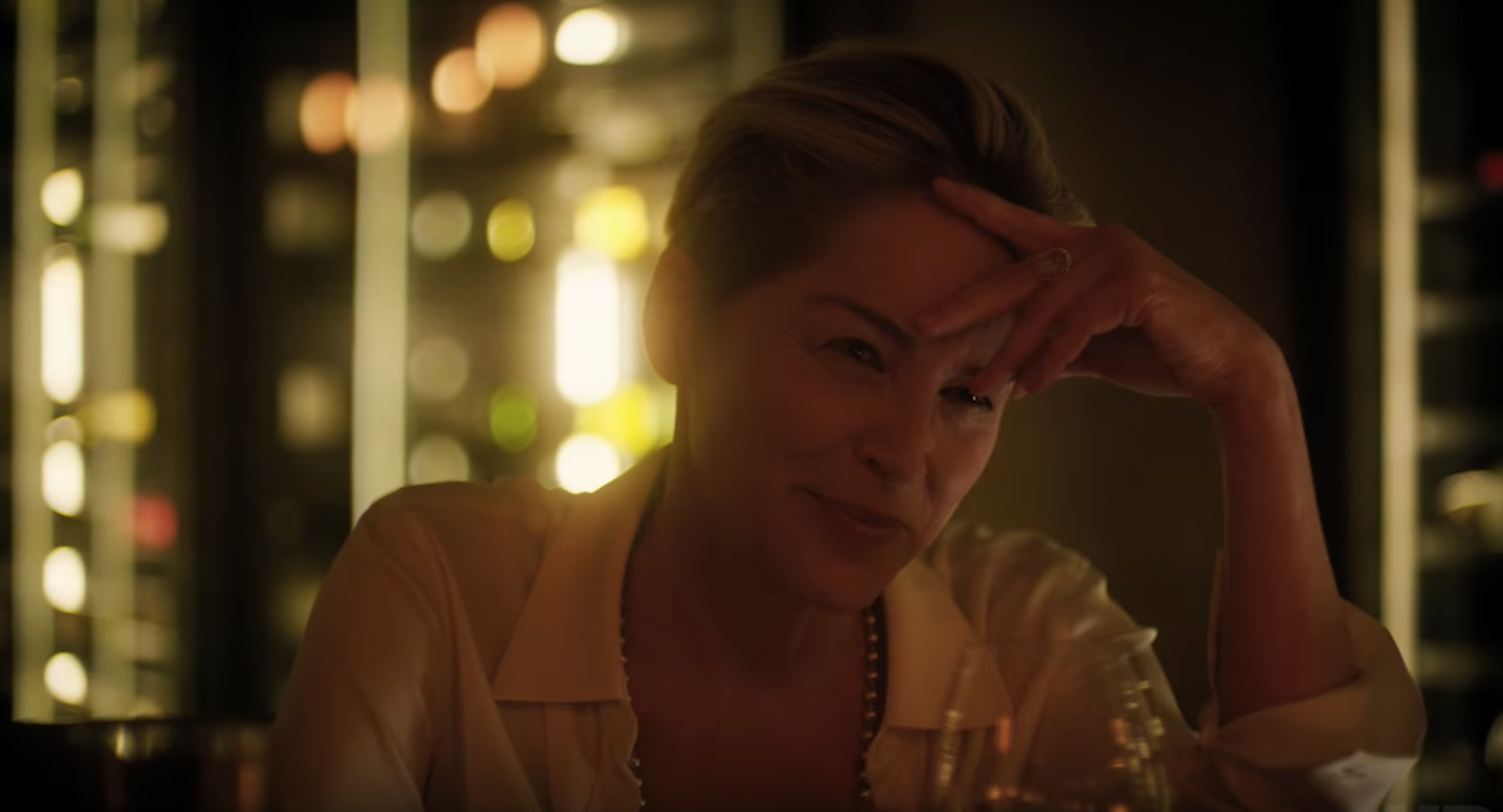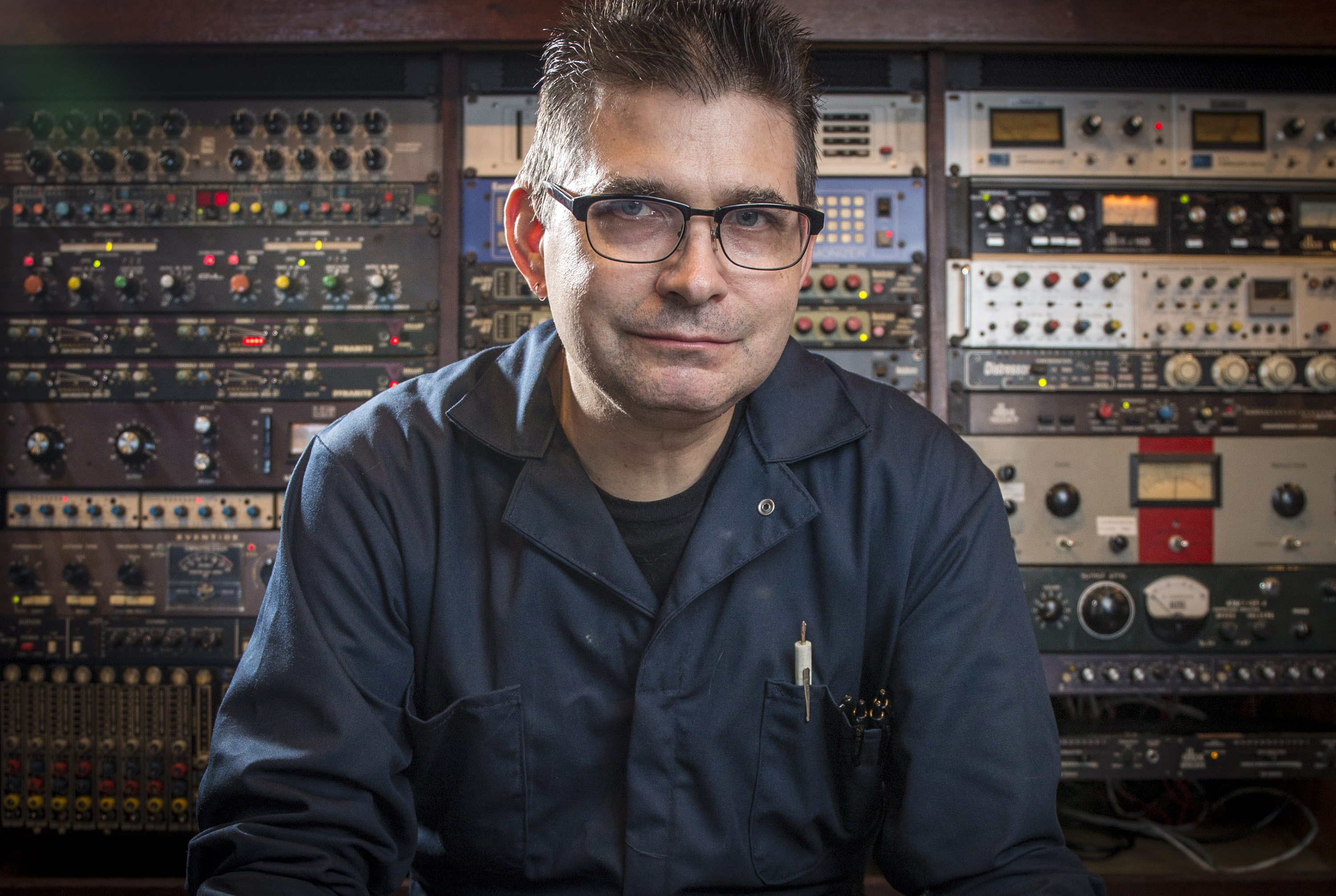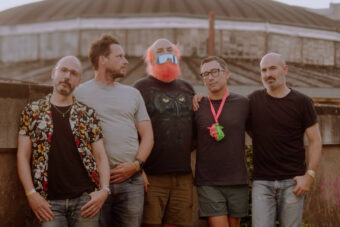Mosaic, director Steven Soderbergh’s new sprawling, art-world-adjacent murder drama, premiered on HBO on Monday, and is running throughout this week. But what you’ll see aired there is perhaps not the project’s definitive form, though it might be the more enjoyable one. Mosaic, as HBO’s ads will tell you, is also available in app form, and has been since last month. Realistically, just watching the premiere should signal to viewers whether they feel absorbed enough by Mosaic’s strange, claustrophobic world to download the show’s extended universe onto their phone.
I say “strange,” but perhaps the central problem with Mosaic is that the plot doesn’t feel quite odd enough to justify the difficulty of Soderbergh’s stylistic choices. It centers around Sharon Stone’s character Olivia Lake, a popular children’s book author living in scenic Summit, Utah. Lake was able to parlay the success of one book into creating a children’s charity called Mosaic and no small stardom (even though it’s unclear if, in the 21st century, children’s picture books are actually capable of catapulting someone into her apparent income bracket). A con man, Eric (Frederick Weller), is hired by Lake’s neighbor to persuade Lake to sell her mansion and the land it sits on with the promise of expanded business elsewhere. Of course, Eric ends up falling in love, and decides to leave his previous business behind, which doesn’t please his client and his local cronies.
The other primary person of interest is Joel (Garrett Hedlund), a New York City expat and graphic novelist who Lake meets at a party, and then offers him studio space if he agrees to help out around the property. When it becomes revealed that Joel has a girlfriend, he quickly becomes a mere hired hand in the mind of Lake. She undercuts him constantly in public, and eventually demeans his art (there’s not enough “under it” and she “doesn’t think there’s ever gonna be”).
This is a show about greed, or a love triangle, or the all-consuming delusions of creative people–well, no, not really, it’s just about a murder. When the chips fall, it’s a garden-variety mystery story, first and foremost. Despite all of writer Ed Solomon’s quippy mouthfuls of monologue explicating the characters and their backgrounds, everything is streamlined (if that is even a word you can use about a Soderbergh project) toward the end game of solving the whodunnit. Much of the character setup is sped past relatively early on, leaving time for the criminal investigation, and later, an attempt to clear the name of the convicted murderer.

Also Read
Anthony Carrigan Loves Surprises
As for the delivery, it’s worth noting that the show is not attractive-looking. There’s not much in the way of shots of Utah’s beautiful snowy bluffs to enjoy; it takes place, like a filmed version of a stage play, on just a few, modest, mostly interior sets. People are bathed in shadow that is a bit too naturalistic; compositions have a bluish or orangish tint. Mosaic, even if you don’t watch it on your phone, invests Soderbergh’s trademark seasick, invasive camerawork with the look of a high-quality Instagram filter. As always with Soderbergh, he often lands on beautiful, intense, or suggestive angles; other times, he just seems to be scurrying around behind people in a room, capturing random parts of their bodies or descending almost entirely into blackness.
On the Mosaic app, users are shunted through a series of half-hour long segments. Each focuses around one of the characters; cumulatively, they are raw material for the more intricately edited, and often more disorienting, broadcast version of the series itself (about an hour shorter than the full content available to sample in the web version.) The innovation of the app version is the increasing level of subjectivity it provides, which means that users are faced with two different choices for the next dramatic path they wish to embark down after every video. Pop-up videos unlock at certain points, flashing across the main video like a character is getting caught up a passing memory. Elsewhere, you can flip through fake news clippings as if you are quite literally playing an investigative computer game.
The net result, in the app version, may be getting to the solution a little too fast. Some of the routes to the finish seem to hinge on the expectation that users will want to retread their steps to discover how some of the plot machinery moved, or meet suspicious background characters that didn’t factor into their version of the story. The app’s methodology places a lot of faith in crime show aficionados, imagining that they will have become invested enough in the narrative to care about it after they find out who did it. The biggest issue with Mosaic, though, is the fact that not all paths through the app create the same amount of tension or ambiguity–in fact, on my first chosen path through, the perpetrator of Stone’s character’s murder seemed entirely unambiguous throughout.
In one scene, Jennifer Ferrin’s character Petra–Eric’s sister, a prominent character in the second half of the story–glances at a tattoo on a woman’s neck, consisting of four arrows pointing outward from a point in the middle. Later, the symbol turns out to have some sordid significance in the plot, but it also mimics Soderbergh’s project’s inflated self-concept. The implication, from both the marketing of Mosaic and references within the series, is that Soderbergh and Solomon have created some kind of directionless, open narrative playing field. The viewer, in theory, has full agency to customize their own version of the story. Ultimately, though, Mosaic is necessarily linear and regimented in whichever way you disseminate it. After all, any story that withholds information, manipulates expectations, and moves toward a finite conclusion, must be. A conventional dramatic arc is always there, even if we’re processing the haute tension through a scrambled, RPG-gameplay-like mash-up. So neither the choices the Mosaic user is allowed to make, or the editing of the broadcast version of the show lead to some gross reinvention of the typical syntax of the crime story, and certainly not stories in general, as the advertising might lead one to believe.
If anything, the imprimatur of Mosaic, in either version, is in its distinctive slow burn–the way viewers’ understanding of what the hell is going on, and most importantly, the stakes, seeps in so gradually that it’s almost painful. It feels like Soderbergh gives us so much of his relatively small cast of characters without creating much of a sense of who they are–that is, despite the high-minded premise, they are still pawns in a noir procedural plot. If the more unimpeded access to their backstories offers a greater illusion of understanding, it is mostly that there are legitimate reasons to be suspicious of everyone. There’s also a strange feeling of candid-cam voyeurism to the show, due in part to Soderbergh’s cinematographic signature, which creates a patina of “realism.” But that impression is complicated by the unwieldiness of the script, which is paced just awkwardly enough to not feel wholly composed, or like it’s being recited by actors struggling through a verbose script at a cold reading.
So the ultimate question, whether you’re just past the pilot or many hours deep in app exploration, is this: Mosaic is cute, but is it worth it? The show is something that both feels like a huge waste of time and something which can only remotely be appreciated or grasped after several frustrating hours of immersion. At that point, an odd, bewitching, and unique atmosphere begins to stabilize that makes it feel like something worth acutely tuning into–something that throws out the convention-filled rule book on how to build a prestige-TV dramatic world. Soderbergh’s long, long scenes are often challenging to sit through or actively annoying, but it’s hard to not want to extend some extra good will toward something that feels messy but, at least, unusual. Ultimately, it feels more vital than most shows subscribing to Netflix’s current brand of mediocre, hyper-professional-grade wish fulfillment programming.
Whatever else is true, Mosaic is certainly a project that will clarify for movie fans, once and for all, their overall sentiments about the artistry of Steven Soderbergh. The show is supremely, dizzyingly Sodereburghian—a project like, say, Lynch’s similarly seat-of-the-pants opus Inland Empire, that may test the mettle and patience of his most devoted fans. It’s no Inland Empire, but it’s worth a shot.




